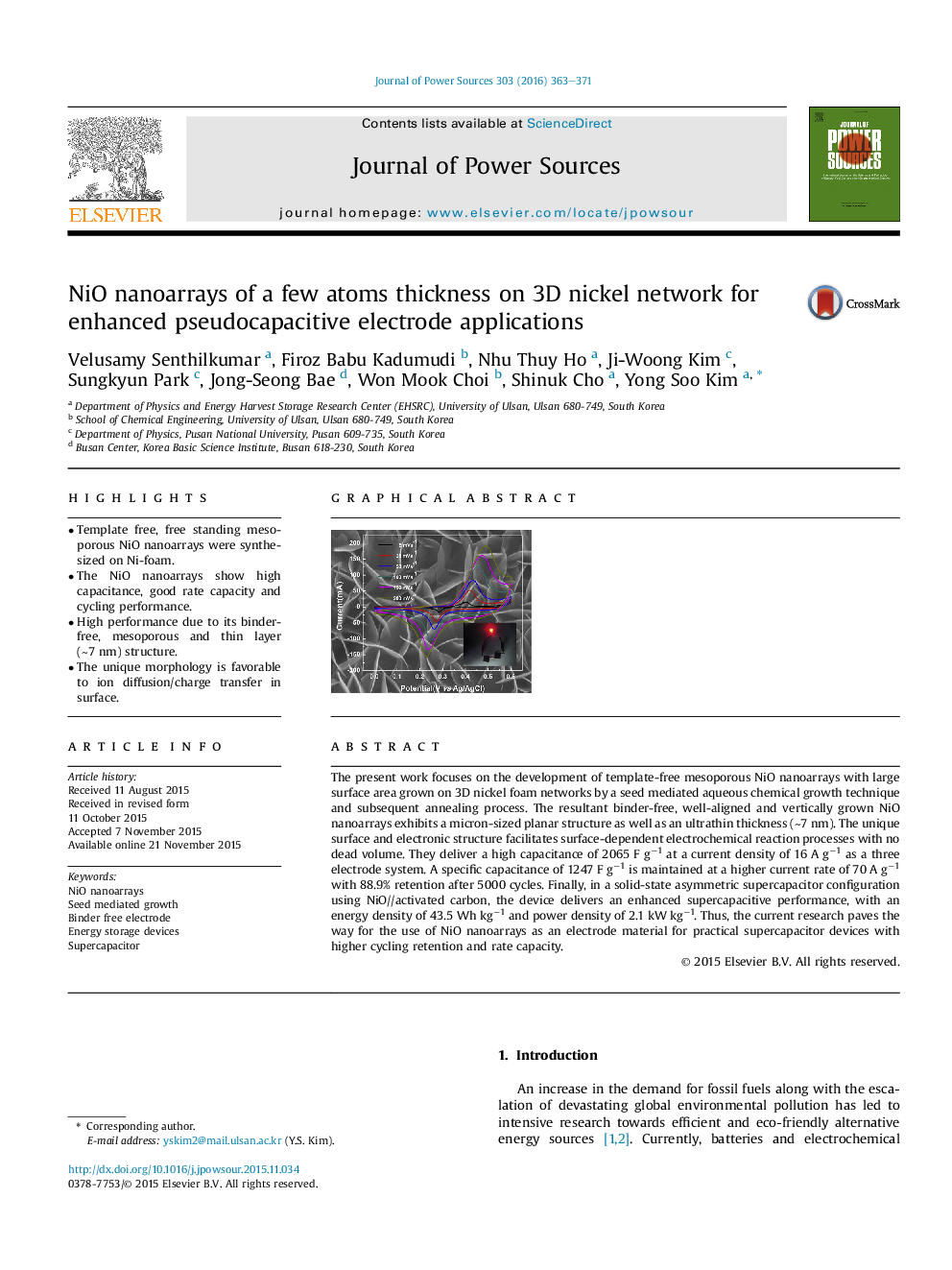| کد مقاله | کد نشریه | سال انتشار | مقاله انگلیسی | نسخه تمام متن |
|---|---|---|---|---|
| 1285756 | 1497929 | 2016 | 9 صفحه PDF | دانلود رایگان |

• Template free, free standing mesoporous NiO nanoarrays were synthesized on Ni-foam.
• The NiO nanoarrays show high capacitance, good rate capacity and cycling performance.
• High performance due to its binder-free, mesoporous and thin layer (∼7 nm) structure.
• The unique morphology is favorable to ion diffusion/charge transfer in surface.
The present work focuses on the development of template-free mesoporous NiO nanoarrays with large surface area grown on 3D nickel foam networks by a seed mediated aqueous chemical growth technique and subsequent annealing process. The resultant binder-free, well-aligned and vertically grown NiO nanoarrays exhibits a micron-sized planar structure as well as an ultrathin thickness (∼7 nm). The unique surface and electronic structure facilitates surface-dependent electrochemical reaction processes with no dead volume. They deliver a high capacitance of 2065 F g−1 at a current density of 16 A g−1 as a three electrode system. A specific capacitance of 1247 F g−1 is maintained at a higher current rate of 70 A g−1 with 88.9% retention after 5000 cycles. Finally, in a solid-state asymmetric supercapacitor configuration using NiO//activated carbon, the device delivers an enhanced supercapacitive performance, with an energy density of 43.5 Wh kg−1 and power density of 2.1 kW kg−1. Thus, the current research paves the way for the use of NiO nanoarrays as an electrode material for practical supercapacitor devices with higher cycling retention and rate capacity.
A high capacitance and cycling retention of few atomic thicknesses NiO nanoarrays electrode is reported. This superior behavior is attributed to its binder-free structure, mesoporous nature, ultrathin layer (∼7 nm) and micro-sized lateral area. Further, high energy density and moderate power density is observed in solid state asymmetric supercapacitor, thus making NiO nanoarrays a potential candidature for practical supercapacitor device applications.Figure optionsDownload as PowerPoint slide
Journal: Journal of Power Sources - Volume 303, 30 January 2016, Pages 363–371